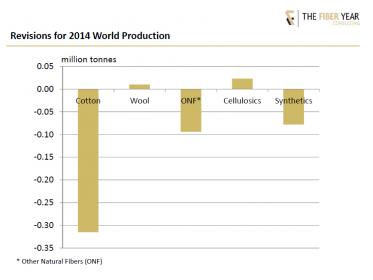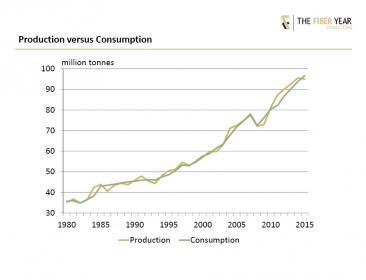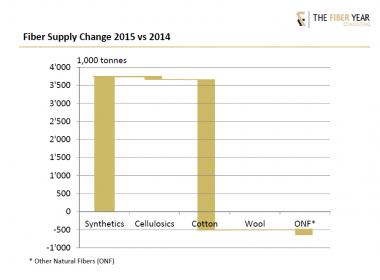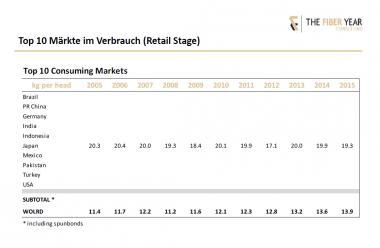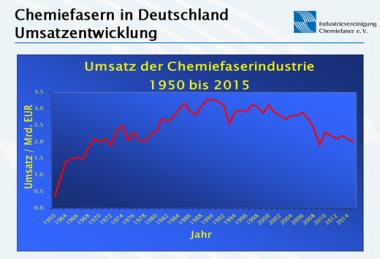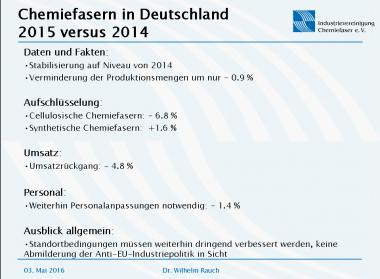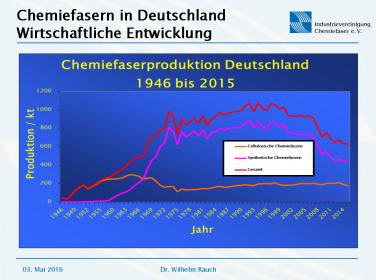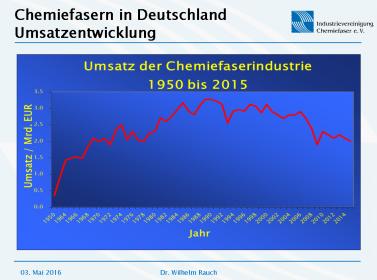RUSSIAN GOVERNMENT SETS DEVELOPMENT PROGRAM UNTIL 2025 FOR THE TEXTILE INDUSTRY
- Anticrisis Plan provides grants of nearly Ruble 1.5 Billion
Moscow (GTAI) – In spring 2016 the Russian government has decided a "Strategy for the development of the light industry until 2025" and a "Federal program to support enterprises of the light industry" (anticrisis plan). Hence the Russian textile enterprises should be supported in the crisis. It is the aim of the Ministry of Industry and Trade to double the share of domestic producers on the clothing market from currently 25% to 50% in the year 2025.
According to the Ministry of Industry and Trade 14,000 companies (including 200 large enterprises) of the Russian light industry are producing clothing, textiles, footwear and leather goods. They generate annually a turnover of Ruble 270 billion. Of that 653 large and medium and 4,000 small businesses are operating in the yarn and textile industry. Because the purchasing power and consumer demand fell, the light industry slowed its production in 2015 by 12%.
To give the clothing and textile factories more security, the Russian government adopted in spring 2016 a "Strategy for the development of the light industry until 2025" and a "Federal program to support enterprises of the light industry" (anticrisis plan). It is the aim of the Ministry of Industry and Trade to double the share of domestic producers on the clothing market from currently 25% to 50% in the year 2025. In this context up to 330,000 additional jobs should be achieved.
Anticrisis plan provides subsidies of Ruble 1.475 billion
In the anticrisis plan Ruble 1.475 billion will be granted. This should especially support manufacturers of school uniforms, children's apparel and textile factories that work on government orders. The financial support includes: subsidies for producers of school uniforms for the lower classes made out of Russian worsted fabrics (Ruble 600 million), subsidies for working capital loans to support purchases of raw materials (Ruble 800 million), subsidies for investment loans for technical modernization of enterprises (Ruble 75 million).
Industrial parks and clusters for the light industry are growing
In addition, two industrial parks for the clothing and textile industry will be set up in the areas of Ivanovo and St. Petersburg. In addition, a regional cluster of the light industry in the Chelyabinsk region of the South Ural is growing. The fund for the development of the Russian industry promotes investments with low interest rates on credits, for example the project of Praimteks (Primetex) in the Ivanovo region for the production of textiles using digital textile printing (credit: Rubles 466 million rubles).
Further, the domestic producers of clothing and footwear should gain access in future to the funding instruments of the federal association for the development of small and medium-sized enterprises. Critics complain, that the subsidies reach mostly large companies only and above all companies working with government contracts.
Capacity building for chemical fibers
Export opportunities are seen by the Ministry of Industry in synthetic fibers. In the textile cluster Ivanovo (http://invest-ivanovo.ru/data/prog.pdf) a chemical fiber plant is growing with public aid, scheduled to begin production from 2018. With that 250,000 t chemical fibers would additionally annually be available. Until now both manufac-turers Komitex and Wladimirski Polyefir produce together 33,000 t chemical fibers per anno. Viscose is currently not being produced at all in Russia. The import share of polyester is 74%, of polyamide 88%.
In future the synthetic fibers may be supplied to BTK Textile and other customers. The production complex of BTK Textile in the textile City Shakhty in the Rostov region, was inaugurated in June 2015. The company manufactures high-tech textiles and knitwear made out of synthetic fibers of which work-wear, sport-wear and ski-wear are being sewn. BTK Textile has fabric production capacities of about 12 million square meters per year, General Director Sergey Bazoev says. Up to now BTK Textile has to buy the synthetic fibers and yarns predominantly in Asia. That could change soon. The BTK Group is the largest Russian manufacturer of men's clothing and uniforms.
| Description | 2015 | Change 2015/2014 |
|---|---|---|
| Cotton fiber (mio. bales) | 111.0 | 4.4 |
| Chemical fibers (mio. bales) | 66.0 | -4.5 |
| Fabrics (mio. sqm) | 4,542 | 14.7 |
| .thereof from: : | ||
| .Silk (1,000 sqm) | 253,0 | 31.8 |
| .Wool (1,000 sqm) | 9.262,0 | -20.9 |
| .Linen | 25,9 | -26,6 |
| .Cotton | 1.176,0 | -4,5 |
| .Chemical fibers | 237,0 | 14,2 |
| Fabrics made out of other materials | 3.084,0 | 25,1 |
| Fabrics with plastic impregnation (mio. sqm) | 32,3 | 14,6 |
| Bed-linen (mio. pieces) | 59,8 | -9,6 |
| Carpets (mio. sqm) | 22,6 | -3,7 |
| Knitwear (1,000 t) | 14,2 | 29,8 |
| Stockings (mio. pair) | 199 | -5,6 |
| Coats (1,000 pieces) | 989 | -22,1 |
| Lined jackets (1,000 pieces) | 1.887 | -45,4 |
| Suits (1,000 pieces) | 4.690 | -12,6 |
| Men’s jackets and blazer (1,000 pieces) | 870 | 14,1 |
| Women’s coats with fur collar (pieces) | 5.543 | -46,1 |
| Clothing made out of artificial fur (1,000 pieces) | 24,5 | 21,0 |
| Uniforms and workwear (mio. pieces) | 20,7 | -8,2 |
| Work- and protective clothing (mio. pieces) | 99,8 | 14,6 |
| Overalls (1,000 pieces) | 733 | -62,4 |
Source: Rosstat 2016
| Description | 1st Quarter 2016 | Change 1st Quarter 2016 / 1st Quarter 2015 |
|---|---|---|
| Sewing thread made out of synthetic fibers (mio. reels) | 14,0 | -0,6 |
| Fabrics (mio sqm) | 1,2 | 23,3 |
| Bed linen (mio pieces) | 14,7 | -7,7 |
| Knitted stockings (mio. pairs) | 55,4 | 34,0 |
| Knitwear (mio. pieces) | 24,8 | -6,0 |
| Workwear, uniforms (mio. pieces) | 31,1 | 11,2 |
| Coats (1,000 pieces) | 269 | 9,1 |
Source: Rosstat 2016
Contact addresses:
Ministry of Industry and Trade
Department of Light Industry
Denis Klimentewitsch Pak, Director of the Department
109074 Moskau, Kitajgorodskij proesd 7
Tel.: 007 495/632 8004 (Sekretariat), Fax: -632 88 65
E-Mail: dgrvt@minprom.gov.ru, Internet: http://minpromtorg.gov.ru
(Sub) department of Light Industry: Director: Irina Alekseewna Iwanowa,
Tel.: -632 87 31, -346 04 73; E-Mail: ivanovaia@minprom.gov.ru
Internet: http://minpromtorg.gov.ru/ministry/dep/#!9&click_tab_vp_ind=1
"Strategy for the development of Light Industry until 2025."
http://www.kptf.ru/images/company/Presentation.pdf (Presentation of the strategy)
http://minpromtorg.gov.ru/docs/#!strategiya_razvitiya_legkoy_promyshlennosti_rossii_na_period_do_2025_goda (Text of the strategy and action plan)
Russian Union of Entrepreneurs of Textile and Light Industry
107023 Moskau, uliza Malaja Semenowskaja 3
Tel.: 007 495/280 15 48, Fax: -280 10 85
E-Mail: info@souzlegprom.ru, Internet: http://www.souzlegprom.ru
Ullrich Umann and Edda Wolf, Germany Trade & Invest www.gtai.de


